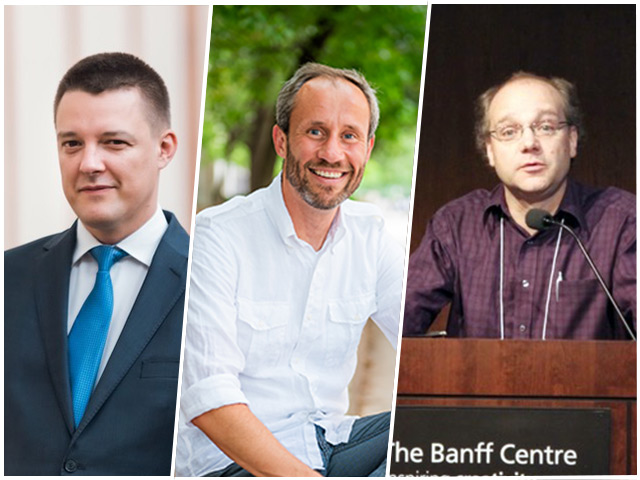New book in data science: Mining Complex Networks

Machine learning enthusiasts can now access graduate-level training from frontline data mining experts in the new book, Mining Complex Networks. The release meets the growing demand for specialized instruction on the analysis and extraction of useful information from network data.
The book brings together perspectives and instruction from three leaders in the field: Ryerson Professor of Mathematics, Pawel Pralat, Head of Decision Analysis and Support at SGH Warsaw School of Economics, Bogumił Kamiński (external link) , and Government of Canada data scientist, François Théberge (external link) .
In a recent interview, Pralat gave readers a preview of what to expect.
There’s a lot of interest in data science books. What makes yours different?
Most books on the market are quite broad and theoretical. Our book is applied and focuses specifically on network mining (as opposed to traditional data mining). Readers do actual experiments coding and analyzing large, real graph datasets, not just toy examples. So, they pick up lots of new tips and tricks on state-of-the-art methods to extract usable insights from complex networks.
The material was inspired by lecture notes for a master’s course (Graph Mining, DS8014) which I taught through Ryerson and Fields Institute. So, the book basically gives readers access to hands-on, graduate-level training in a very hot, emerging specialty area.
All three co-authors bring unique experience. Can you elaborate?
Yes, all three of us are not just users of network mining tools; we’re the ones who actually design and create the algorithms. So, we’re at the centre of the action, in the front row seats, so to speak. I come from the pure math side in graph theory. Bogumił Kamiński is an expert on business applications of machine learning. François Théberge is a Government of Canada data scientist with decades of experience mining complex networks. With this combination, we can produce high-quality, usable tools that organizations actually need in the real world.

Left to right: Bogumił Kamiński, Pawel Pralat and François Théberge.
The book’s experiments include coding in the Julia language. Why this choice?
We actually demonstrate solutions in both Python and Julia. Python is nice for coding prototypes, but data scientists often complain about having to re-code for full development in C, C++ or some other lower-level language. Julia solves this two-language problem because it’s high-level and compiled, both fast and easy to use. It’s still relatively new, but growing in popularity for data science. Bogumił Kamiński is also a well-known open-source contributor, so readers are learning the language from a pioneer in the field.
What interesting features — and practical outcomes — can readers look forward to?
Each chapter discusses a problem, the algorithms used to solve it, and practice experiments to play around with. You can follow the solutions’ code in accompanying Jupyter notebooks and also watch videos that walk you through the notebooks. We also list extra recommended readings and make slides available for instructors who want to use the book to teach their own course.
By the end, readers will be able to create custom code and design their own algorithms for a variety of applications, such as recommending products of interest to users in a network, or identifying the best social media ambassador in the network to promote a product.
Look inside Mining Complex Networks
To view the preface, table of contents, and Jupyter notebooks, visit the book website.
Buy the book
For a limited time, get 20% off at Routledge (external link) . Also available at Amazon (external link) .
In case you missed it: Check out Pawel Pralat and Bogumił Kamiński's previous book, Train Your Brain: Challenging Yet Elementary Mathematics